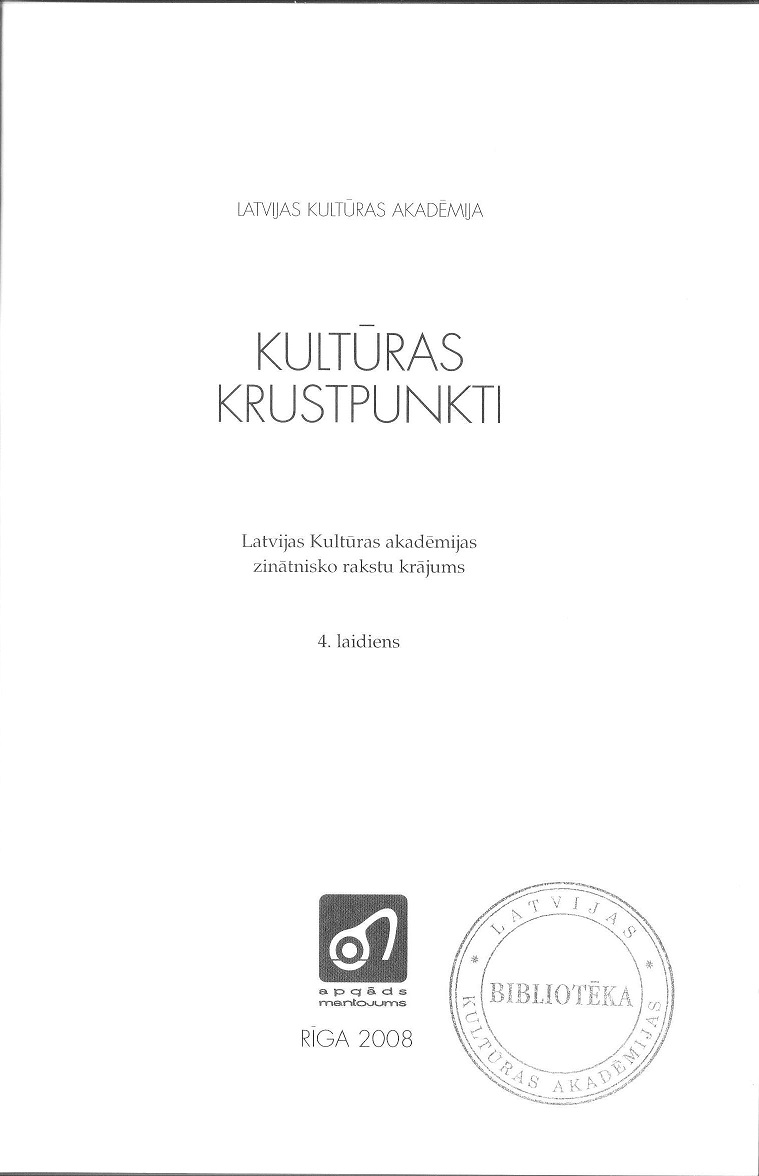Nekroelementu izmantojums tautas dziedniecībā un kaitniecībā
The Use of Necroelements in Folk Healing and Wrecking
Author(s): Indra LucjanovaSubject(s): Cultural history, Customs / Folklore, Ethnohistory, Cultural Anthropology / Ethnology, Sociology of Culture
Published by: Latvijas Kultūras akadēmija
Keywords: Necroelements; objects connected with death; burial; magic; folk healing; graveyard sand; wrecking;
Summary/Abstract: This article features the concept of the 'necroelement' (gr. nekros - decedent, cadaver) which is used to denote the context, perceptions and objects which are connected with death, dying and decedents. The aim of this article is to explain the double nature of necroelements - ,i desire to use the power of the deceased and their place of burial in magic actions with the purpose to harm somebody or on the contrary - to heal (both the above-mentioned things do not exclude one another). Additionally, the article examines the contemporary significance of believing in the magical influence of graveyard sand on the border of one small rural district. The use of necroelements in healing is explained in connection with homoeopathic magic, which is based on the principle of analogy - what happens to the body of deceased, should they have suffered some undesirable illness. All of the things from the graveyard - a cross, a stretcher and sand can be used in healing. The power ascribed to the descendent can be used to achieve the opposite aim as well, ie., used in the wrecking magic. Evidence from folklore reflects the widest exposure of use of the descendent. However, the examined folkloric materials demonstrate a relatively small number of such examples. Most probably this could be explained with the special practice of black magic - it is not demonstrated, it is a solitary and secret activity. Instances when sand from the grave is used for a magical purpose - to affect and to intimidate somebody - are relatively wide-spread in the research location, the parish of Nagļi. It is interesting that in the written sources of folklore there is a common assumption of the healing aspect of graveyard sand, which is contrary to the popular one today - that graveyard sand is associated with death. But to make this declaration, wider research should be carried out (not just within one small rural district).
Journal: Culture Crossroads
- Issue Year: 4/2008
- Issue No: 1
- Page Range: 57-66
- Page Count: 10
- Language: Latvian

